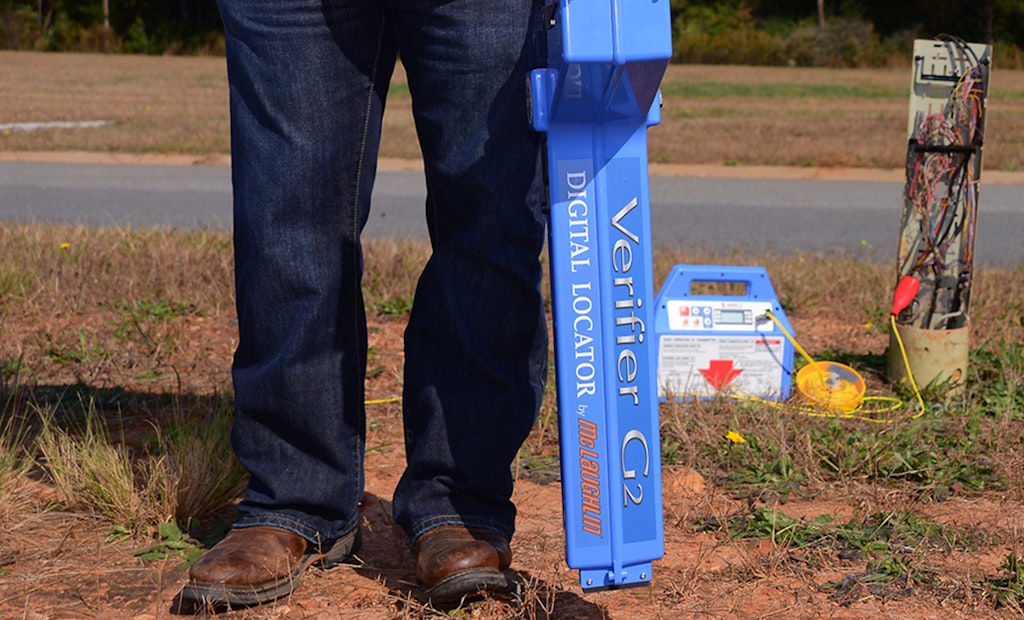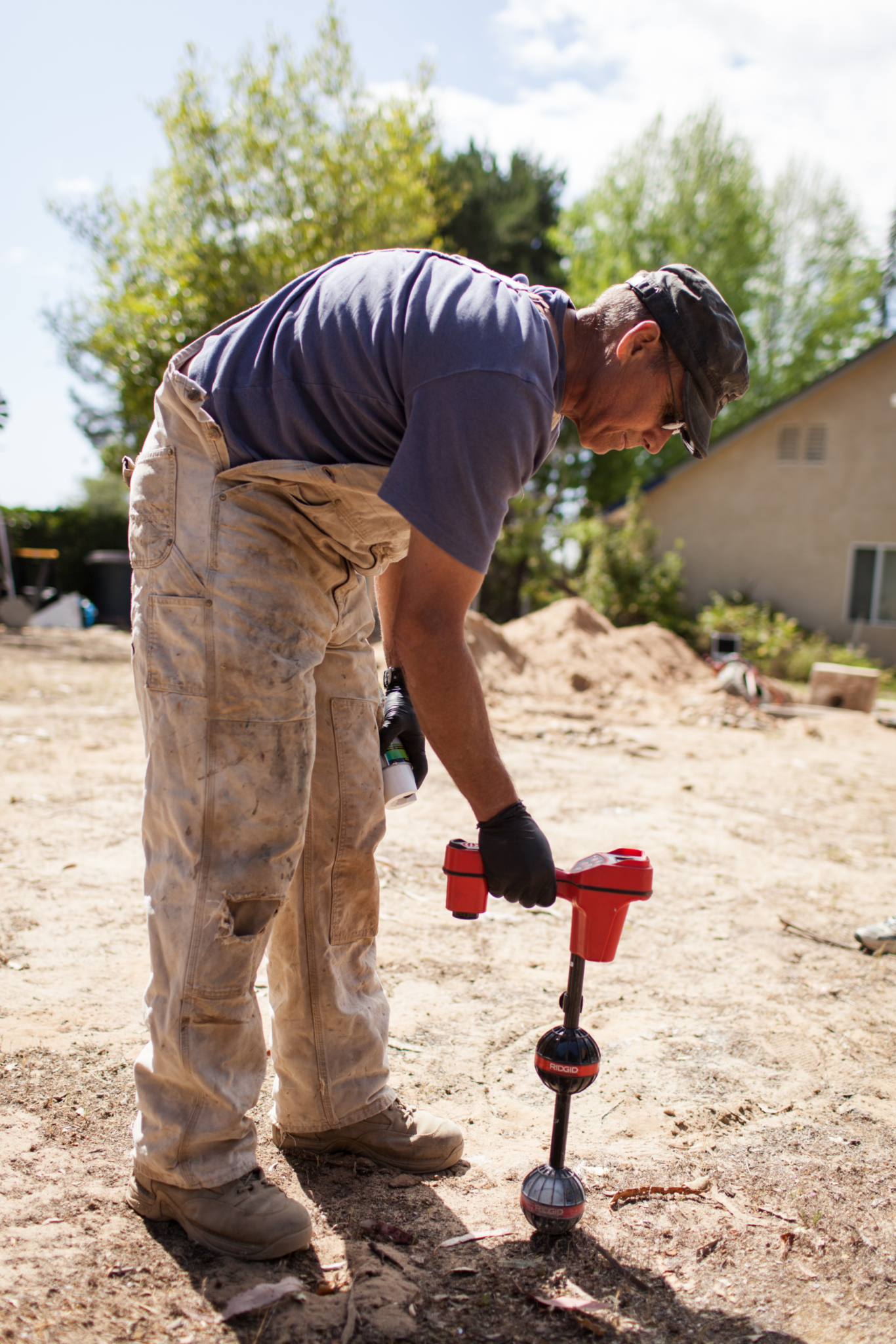Interested in Location/Detection?
Get Location/Detection articles, news and videos right in your inbox! Sign up now.
Location/Detection + Get AlertsApril is National Safe Digging Month, and one of the top messages being promoted at this time is the importance of knowing the location of underground utilities ahead of an excavation project.
Using one-call services like 811 is stressed, as is verifying such information with further utility locating efforts. Of course, utility locating won’t help much in avoiding a line strike if you’re not doing it properly. And all too often that is the case.
“Too many people just grab the equipment, learn the basic functions and start using it,” says Matt Manning, products manager of electronics for McLaughlin.
Here are some tips on how to effectively use an electromagnetic locator.
Finding the Right Frequency
Eric Huber, a senior product manager for RIDGID, says be sure that you are locating the signal you’re transmitting.
“You could be transmitting 8 kHz, but you’re trying to find 33 kHz and you won’t find it because you’re not transmitting it. Make sure whatever your transmitter is set to your locator is set to,” Huber says.
As far as what frequency to use, Manning says a trial-and-error method is best.
“That is why multiple-frequency equipment is very important on job sites now, due to the congestion, condition and construction of the utilities. All those factors determine the best frequency to use,” he says.
Be open to experimentation, but starting with the lowest possible frequency is a good general plan of attack.
“Use the lowest one that will produce a traceable signal over the distance you want to cover,” Huber says. “Lower frequencies will travel very long distances and not jump to other pipes or cables. So the lower the frequency, the more certain you are to be on that particular line.
“If you have a good circuit and you want to go very long distances, you can use a low frequency. If you don’t need to travel as far, maybe go with a medium frequency. When those have failed, you can use a high frequency.”
Huber says it all comes down to finding the best way to produce a strong signal on the line you’re trying to locate. That could mean changing the frequency, going from a direct-connect method to inductive, or simply moving the transmitter.
“If you know where the utility is at the building and know where it is at the street, but don’t know where it is in between, you can try moving the transmitter to the other end to see if you can put a stronger signal on the line,” he says.
Getting Educated on Locating
Manning also advises taking a course about the basics of utility locating.
“Many people out there have been handed down information from the previous guy doing their job,” he says. “But equipment has progressed, and that person’s experience may be related to older pieces of equipment so some things could get missed. If you take a course, they’ll teach you about issues that can arise, like interferences and how they affect a locate.”
In fact, without that knowledge, it’s easy to mistake a job site problem for an equipment malfunction. Bad depth. Doesn’t locate right. Those are the types of brief, vague descriptions that sometimes accompany McLaughlin locators that get sent in for repair, Manning says.
“We have a physical test we do where we check the equipment at three points. We check multiple frequencies and different modes of locating. If we can’t find a problem, we can’t fix it,” Manning says. “An extremely high percentage of the units we send back out, we never hear about again, which indicates there must have been something wrong at the job site. That’s not our goal. We don’t like sending people equipment where we didn’t define what was wrong. But a majority of the time it’s the user not understanding the job site.”
And in the world of utility locating, the potential job site issues are plentiful.
“Sometimes a locator is only as accurate as its operator,” Manning says. “There can be a lot of human error. A locator is designed to be held straight up and down, not swinging around. And you don’t want to grip the instrument. You want to keep your thumbs relaxed so the locator is always hanging down.”
That allows the locator to move along a consistent, horizontal plane — not according to the contours of the ground.
“I’ve seen a lot of bad locates on the inclines and declines along the side of a road because the instrument was not being used on a consistent, horizontal plane,” Manning says. “I saw a case where there was a mislocate on an embankment because the person was just trying to keep the locator at the same distance off the ground and was not moving on a consistent plane. The locate was right — if you were going off an angle.”
From there, accurate locating is about adjusting to the conditions of the job site. For example, say you’re trying to locate an underground line in an area congested with other utilities. Manning suggests locating the line to a known point.
“You don’t want to just walk away 50 feet from where you’re connected, start to locate and say with certainty you have your line. You want to do an evaluation,” Manning says. “Locate back to the source and, if possible, the next visible indicator. I’ve seen a lot of bad locates in which the operator walked to where they thought the utility should be and thought they had it, but they didn’t understand that the signal they were sending out wasn’t on just their utility.”
A remedy for improving the likelihood of staying on your targeted utility in a congested environment is to start your locate in a less congested area.
“People tend to focus on the congested environment,” Manning says. “Instead of setting up at, say a telephone pole or utility box in that area, go to the next one that’s not in the congested area. Locate from the uncongested area into the congested area. That can help a lot in that situation.”
An understanding of soil conditions is also important. Dry soil is less conductive than wet soil and may produce a weak signal on the line being targeted, creating a more challenging locate. That comes into play especially with sandy soils.
“If it recently rained, sand might work alright, but sand drains very quickly so the top surface might not contain any moisture,” Manning says. “You might have to use a different (grounding element). I’ve used a stop sign before to get a ground in sandy situations.”
That can also be helpful in the wintertime when you may be dealing with frozen ground.
“Frozen ground is highly resistant. One time I used a sign that was below the frost line,” Manning says. “That got me from a high resistance down to a wet, low resistance. The key is getting a good ground for the transmitter.
“People I have worked with who have at least a day of locator training — and I don’t mean on only the instrument — are much better than someone who just grabbed the equipment, read the manual and went out there. It’s two parts. You have to know the equipment and how to utility locate.”







